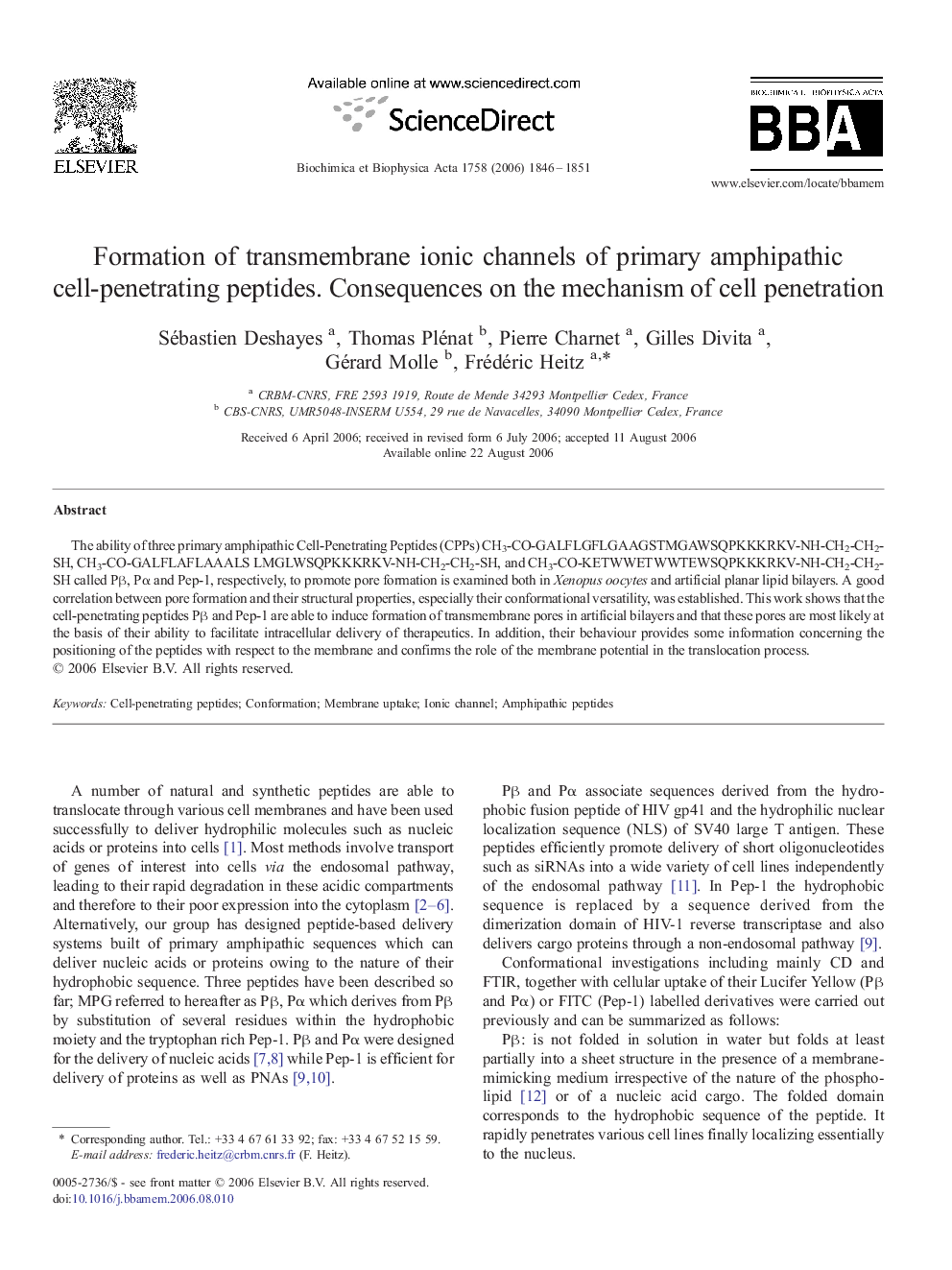| Article ID | Journal | Published Year | Pages | File Type |
|---|---|---|---|---|
| 1945983 | Biochimica et Biophysica Acta (BBA) - Biomembranes | 2006 | 6 Pages |
The ability of three primary amphipathic Cell-Penetrating Peptides (CPPs) CH3-CO-GALFLGFLGAAGSTMGAWSQPKKKRKV-NH-CH2-CH2-SH, CH3-CO-GALFLAFLAAALS LMGLWSQPKKKRKV-NH-CH2-CH2-SH, and CH3-CO-KETWWETWWTEWSQPKKKRKV-NH-CH2-CH2-SH called Pβ, Pα and Pep-1, respectively, to promote pore formation is examined both in Xenopus oocytes and artificial planar lipid bilayers. A good correlation between pore formation and their structural properties, especially their conformational versatility, was established. This work shows that the cell-penetrating peptides Pβ and Pep-1 are able to induce formation of transmembrane pores in artificial bilayers and that these pores are most likely at the basis of their ability to facilitate intracellular delivery of therapeutics. In addition, their behaviour provides some information concerning the positioning of the peptides with respect to the membrane and confirms the role of the membrane potential in the translocation process.
